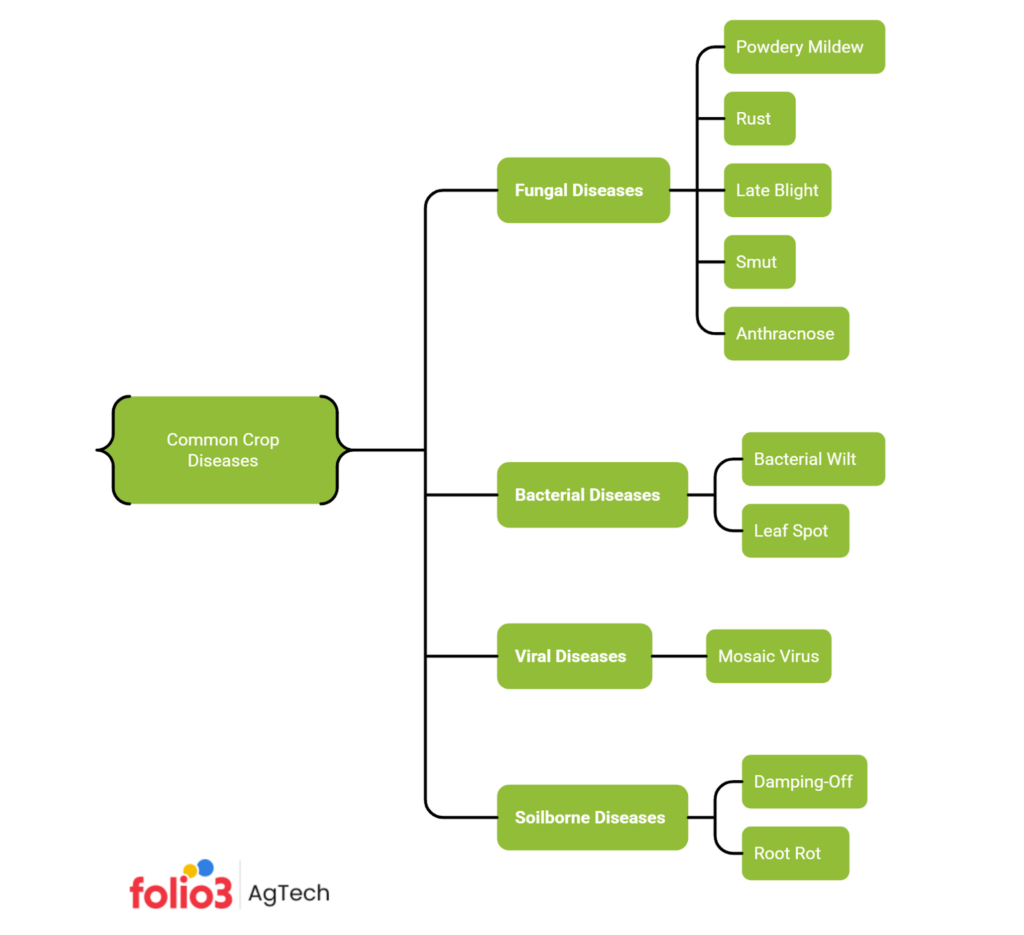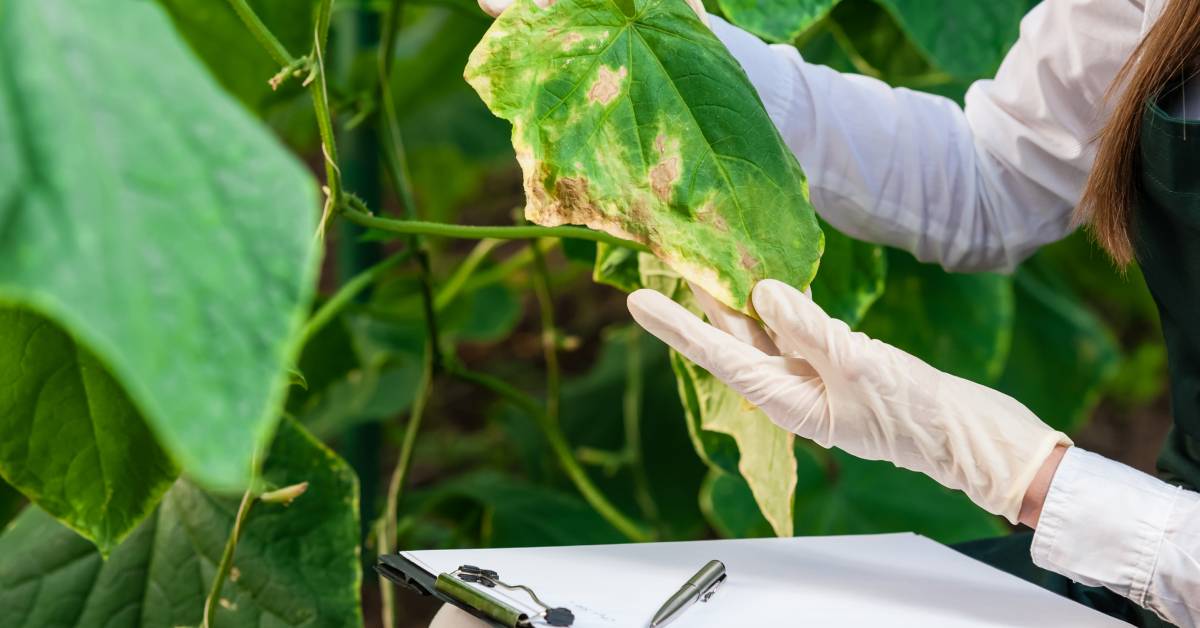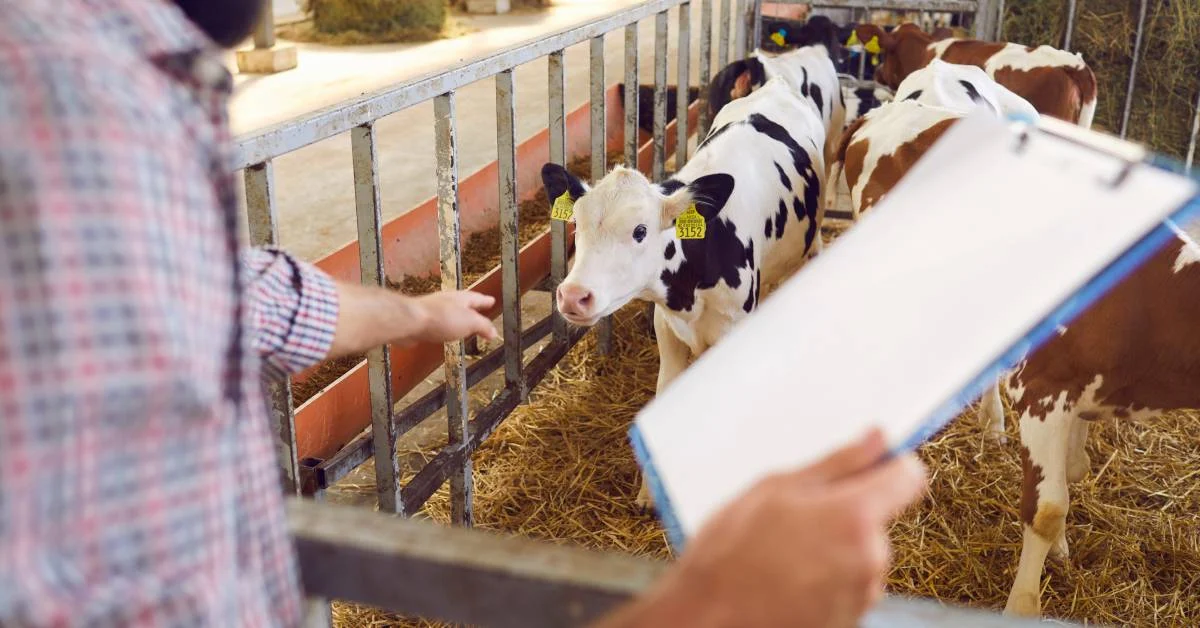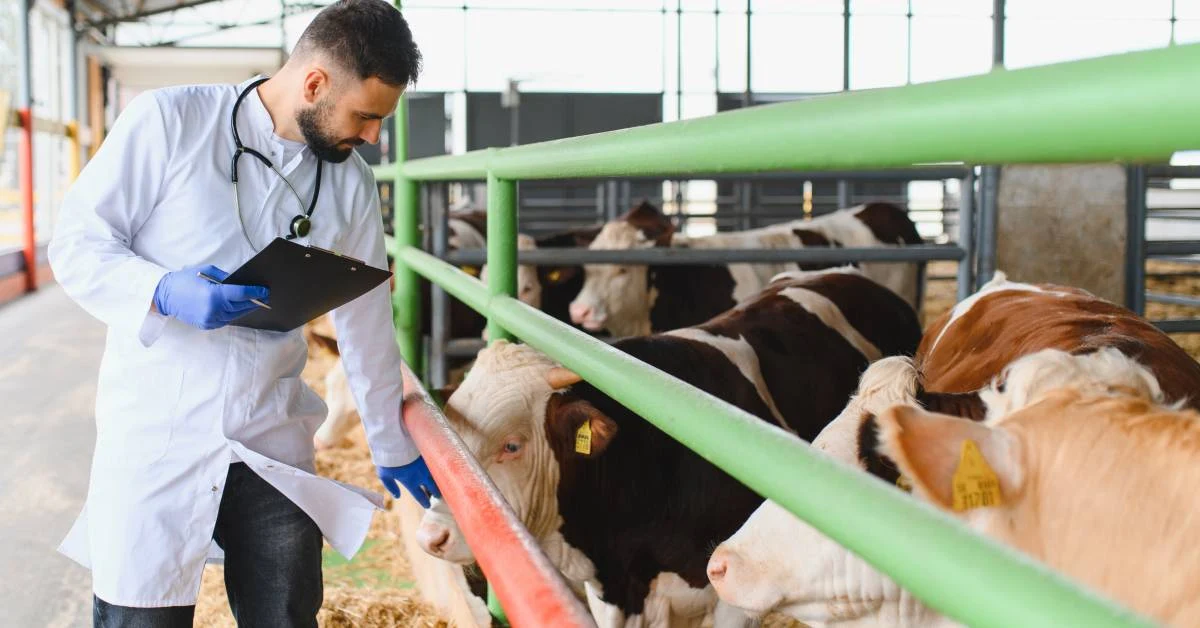Crop diseases are an ever-increasing challenge for farmers worldwide, threatening both productivity and profitability. Changing climate conditions, including rising temperatures, unpredictable rainfall, and increased humidity, create environments where pathogens thrive, making crops more susceptible to infections. Monocropping and intensive farming practices further amplify this vulnerability by reducing genetic diversity and increasing the likelihood of widespread outbreaks.
Up to 40% of global crop production is lost due to plant pests and diseases each year, costing the global economy over USD 220 billion annually. These losses highlight the significant financial and food security implications of crop diseases. Beyond immediate economic consequences, recurring infections can erode brand credibility and consumer trust, particularly in markets that demand high food safety standards.
Early management and system-level prevention are critical to mitigating these risks. By detecting symptoms promptly and implementing preventive strategies, farmers can maintain healthier crops and protect long-term yields. This article explores the ten most common crop diseases, their primary causes, and effective prevention measures, providing actionable insights for farmers and agricultural professionals.
How Do Crop Diseases Spread
Crop diseases can spread rapidly when the right conditions and vectors are present, making early understanding of transmission critical for effective management. Pathogens may be fungal, bacterial, viral, or soilborne, each with unique survival strategies and environmental preferences. For example, fungi often thrive in humid conditions, while bacterial infections may proliferate when plant tissues are damaged or stressed.
Infection vectors play a significant role in transmission. Irrigation water can carry pathogens between plants, wind can disperse fungal spores, insects often act as carriers for viruses, and contaminated tools or machinery can inadvertently introduce infections to healthy crops. Poor soil health and over-fertilization can further increase susceptibility by weakening plant defenses, while seedborne infections or contaminated post-harvest handling can start cycles of recurring infection.
Neglected field hygiene accelerates the spread of crop diseases, making systematic monitoring and preventive practices essential. By understanding these transmission pathways, farmers can adopt targeted measures, such as proper pest control, crop rotation, and sustainable agricultural practices, to reduce risk and protect yields. Addressing disease spread proactively also minimizes the chance of crop failure, safeguarding both income and food security.
The 10 Most Common Crop Diseases and Their Causes
In the following sections, we explore the ten most common crop diseases, detailing how they develop, the conditions that favor their spread, and practical strategies to reduce their impact. By learning the origins and triggers of these crop diseases, farmers can adopt informed practices that not only control infections but also support sustainable crop production, enhance resilience, and protect long-term profitability.

Powdery Mildew
Powdery mildew is a widespread fungal infection affecting cereals, grapes, and vegetables, particularly in humid environments.
Cause
Powdery mildew thrives in high humidity, shaded areas, and overcrowded plants. The fungal spores survive on plant debris between seasons, enabling repeated infections. Overcrowding reduces airflow, creating a microclimate ideal for spore germination and rapid spread. Infected leaves and stems weaken plants, limiting photosynthesis and overall growth. If untreated, this can result in smaller fruits, lower yields, and increased susceptibility to other crop diseases, making management critical for crop protection.
Prevention
Improving airflow through proper plant spacing and pruning is key. Planting resistant cultivars and removing infected debris reduces pathogen reservoirs. In some cases, targeted fungicide applications can prevent spread. These steps are essential for maintaining profitable crops for farmers and ensuring sustainable yields.
Rust
Rust crop diseases, caused by Puccinia fungi, are common in wheat, barley, and legumes.
Cause
Rust spores are carried by wind over long distances, infecting new crops. The pathogen’s lifecycle involves multiple spore stages, allowing survival in adverse conditions. Warm, moist environments accelerate disease development, while dense planting enhances spore transmission. Infected leaves develop pustules, reducing photosynthesis and causing yield losses.
Prevention
Crop rotation and planting resistant varieties can disrupt the crop disease cycle. Fungicides applied at the right stage reduce infections, while maintaining field hygiene lowers inoculum levels. Integrating crop management practices like optimized irrigation and spacing prevents favorable conditions for rust.
Late Blight
Late blight devastates potatoes and tomatoes globally.
Cause
Caused by Phytophthora infestans, this water mold favors cool, wet conditions. Spores spread through contaminated seed tubers, wind, and rain. Leaves, stems, and fruits develop dark lesions that quickly rot, potentially destroying entire fields. Infected debris allows the pathogen to persist season after season.
Prevention
Planting certified disease-free tubers and maintaining good field drainage are critical. Drying foliage and using timely fungicides reduce infection. Incorporating sustainable crop production practices, such as rotation and debris management, helps control long-term crop diseases outbreaks.
Bacterial Wilt
Bacterial wilt affects solanaceous crops like tomato, eggplant, and pepper.
Cause
Soilborne bacteria enter through root wounds, especially in high-temperature, moist soils. Infected plants wilt suddenly and may die within days. The bacteria can survive in soil for years, threatening future crops. Over-irrigation and poor sanitation increase risk.
Prevention
Grafted resistant rootstocks and strict sanitation practices are essential. Crop rotation and soil solarization reduce pathogen load. Precision irrigation combined with precision fertilization ensures plants remain healthy and less vulnerable to infection.
Leaf Spot
Leaf spot affects cereals, legumes, and vegetables.
Cause
Multiple fungal and bacterial species are responsible. The disease spreads via water splashes, especially from overhead irrigation. Warm, humid conditions promote lesion formation, reducing leaf area, stunting growth, and causing early defoliation. Continuous monocropping exacerbates pressure.
Prevention
Using drip irrigation reduces leaf wetness. Removing infected debris and applying copper-based sprays when needed prevents spread. Proper spacing, nutrient management, and sanitation, core crop management practices, also reduce susceptibility.
Smut
Smut primarily targets grains such as maize, sorghum, and wheat.
Cause
Smut fungi replace kernels with black, powdery spores that survive in the soil year after year. Infection is encouraged by high humidity and specific soil conditions, which not only reduce yields and contaminate grain but also highlight the need for practices that improve soil fertility to make crops more resilient to pathogens.
Prevention
Seed treatment with fungicides and planting resistant varieties reduces disease risk. Rotating crops and practicing field sanitation help minimize spore survival, contributing to sustainable crop production and improved long-term soil health.
Anthracnose
Anthracnose affects beans, mangoes, cotton, and other crops.
Cause
Moist conditions trigger fungal germination on leaves, stems, and fruits. Dark, sunken lesions reduce photosynthesis and fruit quality. The pathogen survives on plant debris, leading to recurring infections.
Prevention
Removing infected plant material, pruning to improve airflow, and timely fungicide application minimize damage. Integrating these practices into standard crop management protocols helps maintain healthy, productive crops.
Mosaic Virus
Mosaic viruses impact cucurbits, leafy greens, and legumes.
Cause
Viruses are transmitted primarily by insects like aphids and whiteflies. Weeds often serve as virus hosts. Infected plants exhibit mottled, distorted leaves and stunted growth.
Prevention
Use certified disease-free planting material and regularly monitor crops for early signs of infection. Implement effective insect control measures, such as introducing natural predators or using safe insecticides, to reduce vector transmission. Removing weeds and volunteer plants that can harbor the virus helps limit its spread. Maintaining proper plant spacing and ensuring good airflow further reduces the conditions that favor infection, keeping crops healthier and more productive.
Damping-Off
Damping-off occurs in seedlings at the nursery stage.
Cause
Soil fungi infect young seedlings, particularly under waterlogged or poorly ventilated conditions. Infected seedlings fail to emerge or collapse after germination.
Prevention
Using sterile seedbeds, proper drainage, and avoiding overcrowding reduces risk. Good nursery hygiene ensures seedlings are strong and healthy, setting the stage for successful field establishment.
Root Rot
Root rot affects various crops, particularly in poorly drained soils.
Cause
Anaerobic, compacted soils allow soilborne pathogens to attack roots. Waterlogging worsens infection, leading to stunted growth and wilting.
Prevention
Raised beds, improved aeration, and controlled irrigation reduce pathogen pressure. Combining these with precision fertilization and long-term soil management ensures resilient crops and minimal losses.
Early Detection and Monitoring for Crop Diseases
Early detection and consistent monitoring are critical for managing crop diseases effectively. Regular scouting of fields helps identify symptoms such as leaf discoloration, wilting, lesions, or unusual growth patterns before they escalate into large-scale outbreaks. Farmers should schedule inspections based on crop type, growth stage, and local environmental conditions to maximize the chances of early intervention. As a rule of thumb, scout at least 5–10 plants per hectare (or per block in orchards), check both upper and lower leaf layers, and increase cadence from weekly to twice a week during high-risk growth stages or periods of high humidity.
Modern digital tools enhance monitoring accuracy and efficiency. Satellite imaging, drones, and NDVI-based crop health assessments allow farmers to detect stressed or infected plants over large areas quickly. These technologies help pinpoint problem zones, enabling targeted action rather than blanket treatments, which saves time, resources, and reduces chemical use.
Threshold-based intervention ensures that responses are timely and proportional. By acting once disease indicators surpass specific thresholds, farmers can prevent widespread infections while avoiding unnecessary interventions. Keeping detailed records of past outbreaks and interventions supports pattern recognition, improving decision-making for future seasons.
Solutions such as Folio3 AgTech provide integrated platforms for monitoring, alerting, and analyzing crop health data, giving farmers a reliable tool to maintain healthy crops and mitigate losses from crop diseases.
Integrated Crop Disease Prevention Strategies
Integrated prevention strategies form the foundation for managing crop diseases effectively and sustainably. One of the most important approaches is crop rotation combined with soil regeneration practices. Rotating crops reduces pathogen buildup in the soil, while organic amendments and composting enhance soil structure and nutrient balance, making plants more resilient to infections.
Using resistant varieties and certified seeds provides an additional layer of protection. Disease-resistant cultivars can withstand common pathogens, while certified seeds reduce the risk of introducing infection at planting. Seed health can be further safeguarded through seed treatments (noting the active class or FRAC group) or hot-water protocols for specific crops where chemical treatment is not preferred. Proper mulching, maintaining good airflow, and keeping foliage dry further limit the environmental conditions that favor disease development, particularly for fungal infections.
Biological control methods, such as introducing beneficial microorganisms, can suppress pathogens without harming the ecosystem. When chemical interventions are necessary, timing them appropriately, based on disease scouting and threshold levels, maximizes effectiveness while minimizing overuse.
Finally, long-term farm hygiene practices, including sanitation of tools, removal of infected debris, and controlled irrigation, serve as systemic protection against recurring infections. Combining these strategies provides a holistic approach, helping farmers reduce losses, improve productivity, and maintain healthy crops across seasons.
Organic vs Conventional Control
Managing crop diseases effectively often requires choosing the right balance between organic and conventional methods. Low-residue organic approaches, such as composting, biological control agents, and cultural practices like crop rotation and mulching, are sufficient for many mild infections. These methods reduce chemical exposure, support soil health, and maintain ecosystem balance, making them ideal for sustainable crop production. To avoid resistance buildup even within organic systems, growers should rotate biological modes of action and avoid prolonged reliance on a single input.
However, more severe outbreaks may require conventional chemical interventions. Fungicides, bactericides, or targeted pesticides are necessary when diseases threaten to cause significant yield losses or when organic methods alone cannot contain infections. Proper application timing and adherence to recommended doses are critical to maximize effectiveness and minimize environmental impact.
Misuse or overreliance on chemical controls can lead to resistance development, making pathogens harder to manage over time. Combining organic practices with carefully monitored chemical use ensures a balanced approach, reducing the likelihood of resistance while maintaining crop health. By integrating both strategies thoughtfully, farmers can protect crops, sustain soil fertility, and manage crop diseases efficiently across varying conditions.
How Folio3 AgTech’s Crop Disease Detection Helps Farmers
Folio3 AgTech provides an AI-powered crop disease detection platform designed to help farmers identify infections early and take prompt action. By enabling faster detection, the software reduces dependency on manual scouting and guesswork, allowing both small-scale and large-scale farms to maintain healthier crops and improve yields.
Key features include:
- Score-Based Disease Identification
- Automated Field Heatmaps
- Offline Detection Mode
- Region-Specific Disease Labels
- One-Tap Report Generation
The platform streamlines disease monitoring, making it easier for farmers to track outbreaks, prioritize interventions, and implement data-driven strategies that protect crops and optimize farm productivity.
Conclusion
Crop diseases remain one of the most significant challenges facing modern agriculture, impacting yields, quality, and farm profitability. Understanding the causes, conditions, and vectors of these infections allows farmers to implement targeted prevention and management strategies. Early detection, whether through regular scouting or advanced digital tools, is essential for mitigating crop diseases before they escalate into major outbreaks.
Integrated approaches, including crop rotation, resistant varieties, proper field hygiene, and precise interventions, help reduce the risk and spread of crop diseases while supporting long-term farm sustainability. Technology solutions, such as Folio3 AgTech’s AI-based detection platform, further enhance the ability to monitor crops, identify infections, and make data-driven decisions.
By prioritizing prevention, monitoring, and system-level protection, farmers can stay ahead of crop diseases, protect yields, and ensure consistent, high-quality production. Proactive management of crop diseases is not only critical for individual farms but also for broader food security and agricultural resilience.
FAQs
What Are the Most Common Crop Diseases Farmers Should Watch For?
Farmers should monitor for diseases such as Powdery Mildew, Rust, Late Blight, Bacterial Wilt, Leaf Spot, Smut, Anthracnose, Mosaic Virus, Damping-Off, and Root Rot. Early detection of these diseases is essential to prevent widespread infections and yield losses. Each disease has unique causes and environmental triggers, so understanding local conditions is key to effective prevention.
How Can Farmers Prevent Crop Diseases Effectively?
Effective prevention combines cultural, biological, and chemical strategies. Practices like crop rotation, planting resistant varieties, maintaining soil health, proper irrigation, pruning, and removing infected debris reduce disease pressure. Biological controls and targeted chemical applications, applied at the right time, further minimize crop losses. Early detection and monitoring complement these strategies to ensure timely interventions.
What Role Does Technology Play in Managing Crop Diseases?
Technologies such as satellite imaging, and NDVI-based monitoring, help detect crop diseases early, track field conditions, and generate actionable insights. These tools reduce reliance on manual scouting, provide real-time alerts, and allow farmers to implement precision interventions, improving overall crop health and yield.







